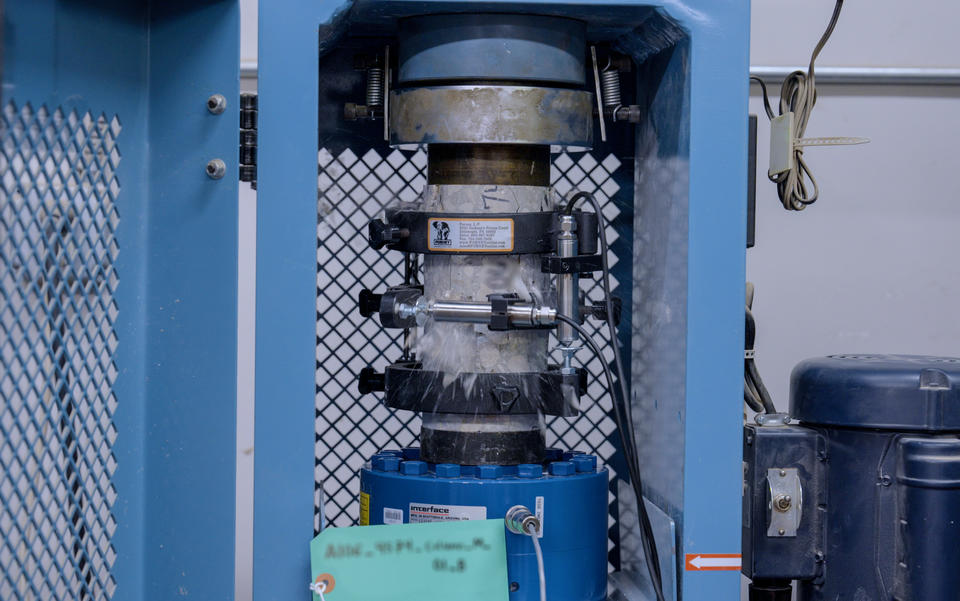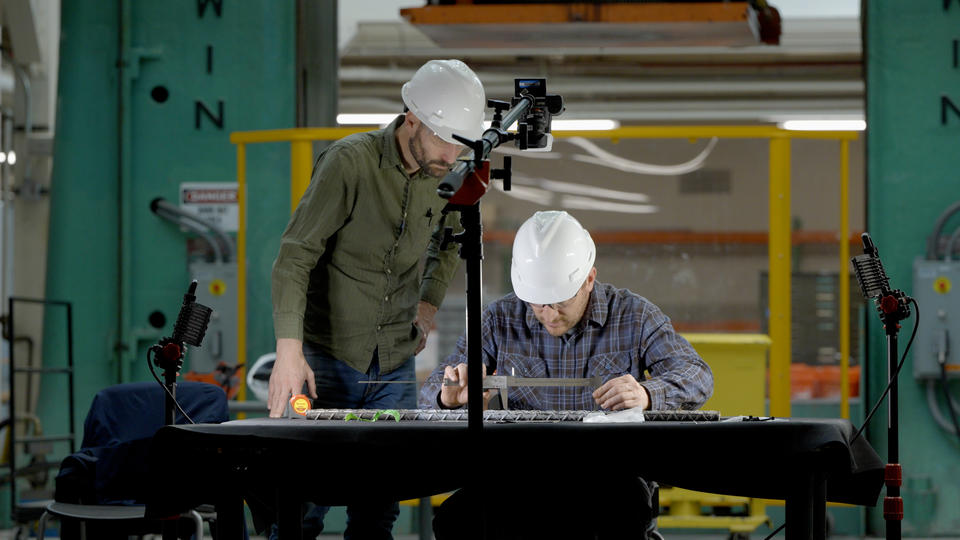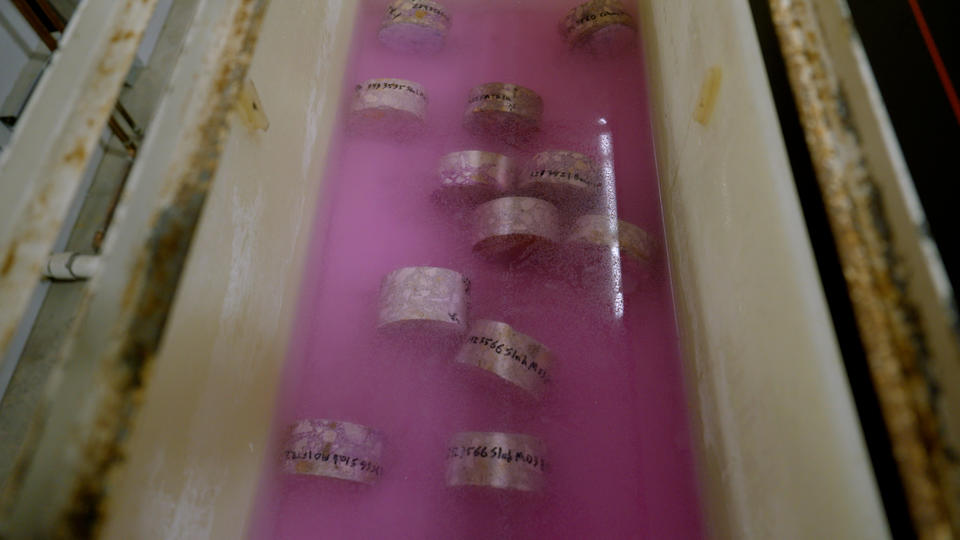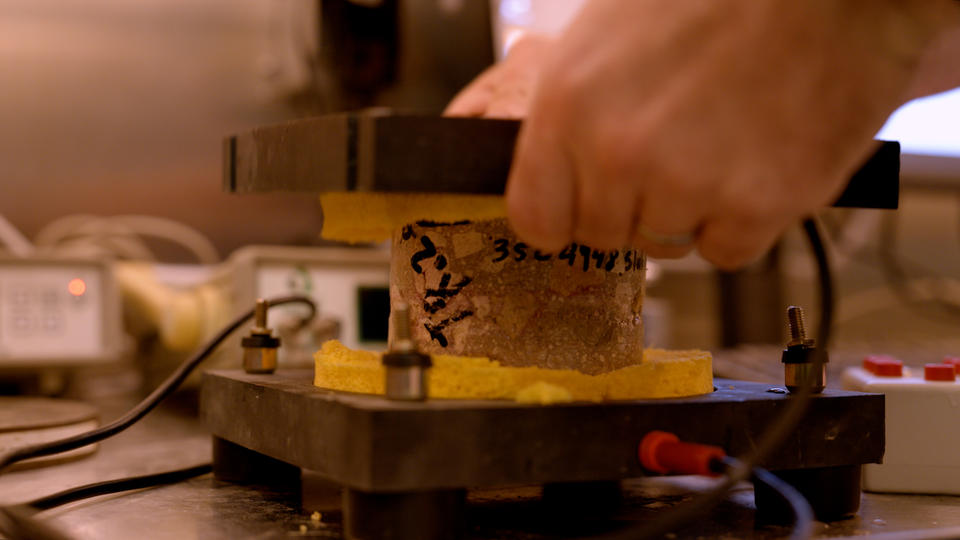GAITHERSBURG, Md. — In a public meeting of the National Construction Safety Team Advisory Committee today, members of the National Institute of Standards and Technology (NIST) team investigating the 2021 partial collapse of the Champlain Towers South condominium in Surfside, Florida, announced that its draft report is projected to be ready for public review in 2026 instead of 2025.
“We remain committed to taking the necessary investigative steps to ensure that we have as sound an understanding of the collapse as is technically feasible and to develop strong and actionable recommendations for improvements to building codes, standards, and practices that incorporate the lessons from the Champlain Tower South tragedy,”said investigative lead Judith Mitrani-Reiser. “Unfortunately, we have faced technical and programmatic delays that have caused us to adjust our timeline. We will issue our report for public comment as soon as the science permits, and we will continue keeping communities in Surfside and Miami-Dade County informed of our progress.”
In a virtual public meeting, Mitrani-Reiser and investigation associate lead Glenn Bell reported that the team has completed over 1,000 tests and examinations of concrete and reinforcing bar (rebar) samples taken from the collapse site. The results of the tests are enhancing the NCST team’s computer simulations that characterize the building’s ability to resist forces experienced prior to the partial collapse.
With completion of that work, Mitrani-Reiser said that NIST has initiated the process to return custody of the evidence specimens to the Miami-Dade Police Department.
The revised timeline will see the technical work completed by the end of May 2025, with the draft report expected to be released in the spring of 2026.
NCST Insider | feat. Fahim Sadek
The technical work still underway includes reviewing records, assessing the material properties of various parts of the building, analyzing concrete durability and aging, characterizing reinforcing steel corrosion, assessing any potential geotechnical contributors to the failure, completing computational models that account for soil-structure interaction, conducting the remaining structural tests, incorporating as-built data into existing models and running simulations of computer collapse models. The team has also resumed interviewing eyewitnesses and those familiar with the building, following a pause this summer around the anniversary of the collapse.
One major project still underway, and now with a later completion date, is the testing of large-scale slab-beam-column connections (i.e., pool deck and lobby level partial structural subassemblies) and the construction and testing of slab-column connections (i.e., pool deck structural subassemblies). These components are being built with materials and specifications similar to those used in the original construction of Champlain Towers South, based on information collected from the testing and evaluation of the physical evidence. Before the slab-column connections are tested to failure, some of them will undergo a process to corrode the reinforcing steel bars, to reflect the level of corrosion that was observed in some of the physical evidence obtained from the collapse site. These tests will inform the understanding of the strength of various components and how they would have performed in the building.
“This is one of the most complex building failure investigations ever undertaken,” said Bell. “We will continue to work just as hard as we can to ensure that we are being thorough and that our results are sound, so that we can provide accurate and complete answers to what caused this tragedy, and to develop appropriate recommendations that will make other buildings safer.”
Mechanical Testing of Physical Evidence Complete
The Champlain Towers South building was primarily made of steel-reinforced concrete, one of the most versatile and widely used construction materials in the world. The combination is effective because the two materials mitigate each other's weaknesses. Reinforcing steel helps concrete resist tension, or getting pulled apart, and concrete provides superior strength in compression, or being pushed, and protects the steel from environmental factors that could cause it to rust.
B-Roll Reel #7: Champlain Tower South NIST Investigation | Rebar Testing
The testing recently completed by the National Construction Safety Team is providing a detailed understanding of the strength and deformability of the concrete and reinforcing steel materials collected from different parts of the building. The properties of the materials can vary due to differences in the material constituents and manufacturing processes, and variations in construction methods. They can also vary due to how different parts of the building experienced environmental exposure that can cause material aging or deterioration. Concrete properties, in particular, can vary widely. The team tested a large number of samples to ensure accuracy in the measurements and their variation and in the computer models they support.
The testing involved several different types of methods, described below.
Compression Testing
NCST researchers drilled out concrete cylinders from the building debris, and from them, prepared test samples about the size of an oatmeal can. They then put the samples into a hydraulic press that squeezes down on the sample under large pressures until it breaks. The pressure it takes to break the concrete, the “failure point,” is an important property that is used in the computer models.
NIST

Tension Tests
Tension tests on concrete measure how well a material resists splitting or getting pulled apart. The test itself is a bit counterintuitive: A hydraulic press slowly squeezes the cylindrical sample (on its curved side instead of the flat face) to create stresses inside the concrete that cause it to split. Engineers record the maximum load at failure, watch how the sample changes shape, and evaluate what it looks like after the test is complete.
For tension tests of reinforcing steel, the ends of a sample are gripped with clamps and slowly pulled apart until the reinforcing bar breaks. In addition to traditional sensors that record the force and deformation during the test, a high-resolution camera tracks the movement of flecks of paint that are applied before the test to track differences in how the steel deforms at different locations along the sample. The test measures how far the reinforcing bar stretches before breaking and its breaking strength.
R. Eskalis/NIST

Petrography
Pieces of concrete evidence from the Champlain Towers South building were examined under a high-power microscope in a process called petrography. NCST experts used this method to study the condition of the cement paste and aggregate that make up the concrete. Petrography looks for evidence of damage, such as that caused by exposure to seawater, which can weaken the concrete, or carbonation, a chemical reaction between carbon dioxide in the air and elements in the concrete, which can diminish the ability of the concrete to protect the reinforcing steel from corrosion.
Transport Tests
While concrete does a good job of protecting steel rebar from the elements, concrete has tiny holes that cause it to act like a sponge and absorb water. If the concrete absorbs water quickly or never has a chance to dry, the steel embedded within it could get wet and start to corrode. If that water contains chemical ions such as chlorides, it can cause the steel reinforcement to rust even faster. Buildings built near the ocean like Champlain Towers South are often exposed to sea spray containing sodium chloride, introducing corrosive chloride ions into the concrete.
Laboratory transport tests reveal how fast water and the chemicals it carries could get to the steel reinforcement within concrete. For this test, hockey-puck-sized samples of concrete from the building were immersed in water to a standardized water content, and the team measured how fast they dried. The researchers then immersed the samples in water again to measure how long it would take for the water to absorb completely into the concrete. The samples were then left to dry to see how quickly the water leaves the concrete. It takes about two weeks to measure the water absorption rate and two weeks to measure the drying rate, so even though some samples could be tested simultaneously, each absorption and drying test lasts about a month, including specimen conditioning.
R. Eskalis/NIST

Electrical Conductivity
Rust is an electrochemical reaction, just like the reaction that happens in a battery. In the same way that a battery only runs when both ends are connected, rust only starts when electrons can move from one part of the metal to another. Rust forms faster when electrons move more easily through the material. To test the conductivity of the Champlain Towers South concrete samples, researchers wet the concrete and then applied an electrical current through it. The more conductive the wet concrete is, the easier it is for electrons to move in the material, which allows rust to form faster.
R. Eskalis/NIST

Corrosion on Fast Forward
The researchers also sought to determine how much reinforcing steel samples from Champlain Towers South had degraded over the life of the building. Because rust eats away at steel, a rusted piece of rebar is lighter than a pristine piece. By comparing the weight of rusted reinforcing bar samples from the building with pristine samples of the same size, researchers were able to measure how much steel was removed by rust.
To understand how rust forming on reinforcing bars could have reduced the strength of the structure, the team induced rapid corrosion in structural test elements to attempt to generate conditions that could have occurred in Champlain Towers South. Team members embedded reinforcing bars in concrete, soaked the concrete in salt water, and ran electricity through it, causing the reinforcement to begin to rust rapidly, replicating decades of corrosion in weeks.
Updates on the investigation and preliminary findings can be found on the NIST website, including recordings of the public meetings. Slides from today’s advisory committee meeting can be accessed on the NIST website, in the meeting’s agenda.
NIST encourages members of the public to submit any information, including video, photos or other documentation, that might help the investigation via the NIST Disaster Data Portal.
Originally published at https://www.nist.gov/news-events/news/2024/09/nist-provides-update-champlain-towers-south-investigation







